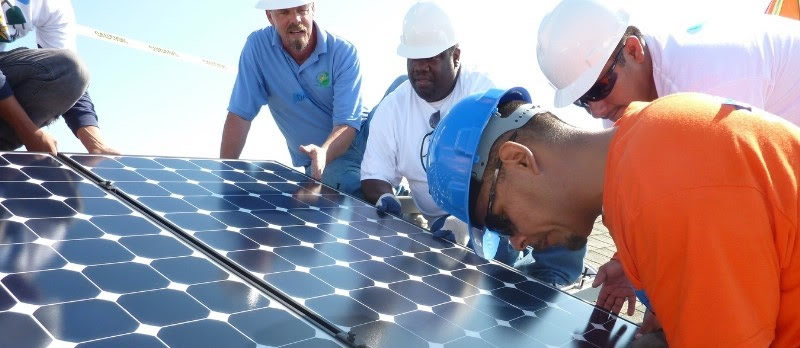 Last week we reported on important trends that are likely to affect the development of hybrid renewable energy systems in 2018, particularly work that is being done on the modeling, design and implementation of microgrids. HOMER Energy has provided software and consulting services for many years to people in developing countries who wish to use hybrid microgrids to increase energy access. We have also worked with island governments and companies operating in remote, off-grid locations. Now microgrids are beginning to have a serious impact in developed regions including the US and Europe, where energy resilience is an important priority. They may even play a role in stabilizing the traditional electric grid and increasing the amount of distributed renewable energy that can be added to the system. This week we bring you the second installment of interesting trends to look for:
Last week we reported on important trends that are likely to affect the development of hybrid renewable energy systems in 2018, particularly work that is being done on the modeling, design and implementation of microgrids. HOMER Energy has provided software and consulting services for many years to people in developing countries who wish to use hybrid microgrids to increase energy access. We have also worked with island governments and companies operating in remote, off-grid locations. Now microgrids are beginning to have a serious impact in developed regions including the US and Europe, where energy resilience is an important priority. They may even play a role in stabilizing the traditional electric grid and increasing the amount of distributed renewable energy that can be added to the system. This week we bring you the second installment of interesting trends to look for:
 Blockchain Technology
Blockchain Technology
Blockchain has been generating a lot of buzz recently, and that’s likely to continue. But few people understand it. A cursory definition is: Blockchain makes use of encryption and distributed data sets to increase the security and reliability of complex transactions. Some have called it a “digital ledger.”
While blockchain was first used as the foundation for cryptocurrencies, such as Bitcoin, people are now thinking about the possibilities to disrupt other industries, such as energy trading, by conducting transactions on a peer-to-peer, consensus level, rather than going through a central settlement authority. It is starting to be recognized as a potential method for managing small-scale energy trading in networks of microgrids and as such, could promote the growth of distributed energy systems.
The Brooklyn Microgrid is already using blockchain technology to facilitate peer-to-peer trading between owners of residential solar energy systems. The Brooklyn project would not be possible without important policy changes made as a result of New York state’s “Reforming-the-Energy-Vision (REV)” initiative, designed to encourage renewable energy and resilience, and modernize the electric grid. So if you want to build a microgrid that enables peer-to-peer energy trading, make sure your state laws will allow you to do it!
Virtual Power Plant
A virtual power plant (VPP) is a software-enabled aggregation of distributed energy resources designed to function as a grid resource. Where do microgrids fit into this? While it’s not necessary for a VPP to be a microgrid (capable of functioning in off-grid mode), any microgrid could perform as a VPP, which could potentially enhance its financial value. Virtual Power Plants react in real time to changing load conditions to help balance electricity supply and demand, provide utilities (or their customers) with extra power when needed, sell excess energy into profitable markets, or help utilities avoid investing in brand new power plants. There are several interesting VPP pilot projects underway:
- A Con Edison project in New York is linking 300 homes with solar-plus-storage to test the VPP concept.
- A Hawaiian Electric Company (HECO) project on the island of Oahu links storage systems of nearly 30 customer sites, creating an energy storage “fleet.” Using predictive software from Stem, Inc, the project will study how well combined storage resources can kick in to stabilize solar variability or peak demand on the grid. Stem calls its software that underlies this subscription-based model “storage-as-a-service.”
Any kind of project that enables DERs to work together can be thought of as a Virtual Power Plant. Look for more pilot projects, and keep an eye on what’s happening in Europe, where they can sell VPPs in wholesale power markets.
Microgrids-as-a-service
This phenomenon may not be popular enough for us to define it as a trend just yet, but it’s certainly worth mentioning. Although one company describes “microgrids-as-a-service” as a software package that provides microgrid building tools, it seems like a definition related to microgrid financing is more likely to catch on. In that case, “microgrids-as-a-service” or MaaS, means let “the experts build your microgrid for you” in a turnkey arrangement, while you avoid all the expense, hassle and brain damage. In this scenario, which is being championed by Schneider Electric, Solar City and several other companies, MaaS is a financing mechanism that could enable more microgrids to be built, soon. These deals involve power purchase agreements, not unlike the financing agreements for solar projects and energy efficiency. Ultimately, MaaS could be a service that utilities provide for their customers. Here are a few examples of new “microgrid-as-a-service” projects:
- Schneider Electric and Duke Energy have teamed up to build microgrids for the State of Maryland, which will benefit by getting more clean energy and grid resiliency, without having to pay for the microgrid itself.
- Solar City has launched “GridLogic,” a “microgrid-as-a-service” offering that provides technology, financing, installation and maintenance services to its customers. The company is targeting municipalities, campuses, remote communities and military bases.
Look for new partnerships and business models around the building, operation and maintenance of microgrid, especially if they involve utilities.
Read 2018 Trends that Will Impact Microgrid Development: Part One
